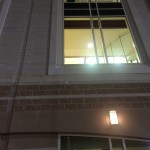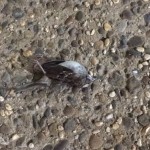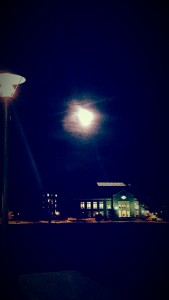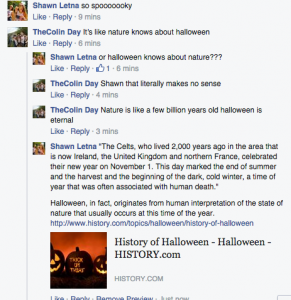“It came as a shock when I finally realized what the grapes were trying to tell me: ‘We were here first.’ The trees were the newcomers. The grapes were a remnant of a very different civilization that had existed not that long ago. They were like a hand reaching out of a grave in a last, desperate signal of an old way of life about to be snuffed out by the new forest” (Sterba, 8).
I thought this was beautifully written. The imagery itself was as shocking as the message it delivered. The forest we see today in the eastern U.S. is not remnant wilderness. It is regrowth after generations of alteration to our landscape. I had never considered this before. Especially not in the following terms:
“Concord had been a relatively civilized place for thousands of years – a great expanse of forest shaped and improved by Indians alongside a meadow left in the wake of a retreating glacier and occupied and fashioned by beavers. The Indians called it Musketaquid (Grass-Ground River). This landscape had fallen into disrepair relatively recently, after epidemics of European diseases in 1616 and 1633 killed off most of the Indians” (Sterba, 20).
I find Sterba’s account of the impact of Indians and beavers to be fascinating. He discusses how “meadows and fields [were] created by ‘wilde beasts and wilde men,’ namely beavers and Indians” (19). I certainly never really thought of beavers as key shapers of the environment prior to European settlement. However, this makes me think back to a previous blog post in which I discussed Tallamy’s statement, “We feel completely justified in sending those plants and animals that depend on those habitats off to make due someplace else…partly because, until recently, there always has been somewhere else for nature to thrive” (No Place to Hide, 23). I actually discussed an example of beavers altering the environment and causing trouble for the Great Smoky Mountain landowner with dam creation and flooding. Sterba discusses the “comeback of beavers, an animal once virtually extinct in the Northeast, and the mounting conflicts between beavers and people” because “‘the habitat is back and now full of people'” (Sterba, 2). In the case of the beaver you can see the layers of wilderness, development, and regrowth.
Sterba calls for readers to imagine the contiguous United States before development and regrowth:
“Kellogg estimated that in what became the contiguous United States, 71.7 percent of the nation’s forested lands in the year 1630 were in the East. That is, they extended from the Atlantic Ocean westward, petering out in the prairie, or Great Plains. By Kellogg’s estimate, the twelve states along the Atlantic coast out to and including the Appalachian Moutains were, on average, 93 percent forest covered in 1630” (Sterba, 25).
By 1907, the US lost 43% of its forest “with anywhere from 40 to 70 percent stripped away in the Northeast and Midwest, depending on the state” (31). Then came the era of regrowth. It is absolutely mind-boggling to think of the transformation of the American environment.


 After seeing this in real life it really stuck with me how awful this trend is. This seems like something that we can really fix, who cares about our campus architecture?!? There are birds dying out their because of our selfish actions!!!
After seeing this in real life it really stuck with me how awful this trend is. This seems like something that we can really fix, who cares about our campus architecture?!? There are birds dying out their because of our selfish actions!!!

